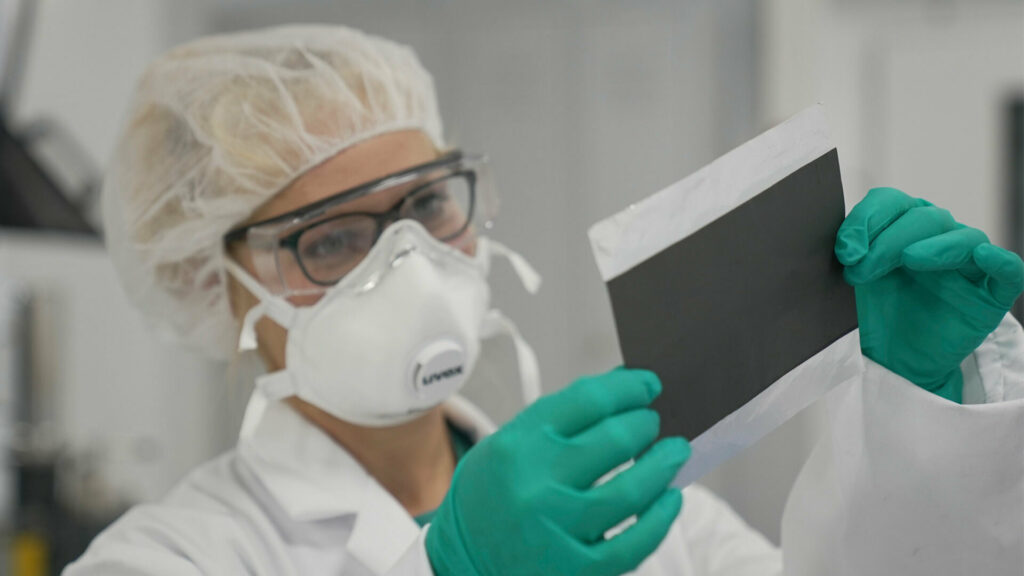Volkswagen’s PowerCo SE has developed a new way to create batteries and it could save the automaker hundreds of millions of euros every year.
While the process is a little hard to explain, the company has developed a new “dry coating” procedure that allows for manufacturing electrodes more affordably.
As Volkswagen explained, “In modern industrial electrode production, the battery materials are mixed with additives and liquid solvents to a slurry. Afterwards, they are coated onto foils of copper or aluminum, then dried and calendered.” This is a costly and power-intensive process, but dry coating cuts out two of the steps.
More: VW’s Ontario Battery Factory Will Be The Largest Manufacturing Plant In Canada
In particular, the dry coating procedure allows them to “calender the powdery basic materials directly onto the foil, similar to a printing procedure.” Volkswagen said the powder coating can be applied in an “extremely fine and even manner,” and can be as thin as a strand of hair. The automaker says this “guarantees excellent spatial energy density and a long life cycle, while improving the fast-charging ability of the battery.”
Those are all good things, but the cost savings are huge as chemical solvents are no longer required and the most energy-intensive part of cell manufacturing is eliminated. Speaking of which, the new method can result in energy savings of approximately 30%. Production can also occur in factories that require 15% less floor space and this amplifies the savings.
As Volkswagen noted, “Per building block of a regular Gigafactory with a production capacity of 20 GWh, four parallel coating and drying lines can be saved, equaling an area of 7,000 square meters (75,347 square feet). As a result, the exterior length of the plant can be reduced by about 100 meters (328 feet).” The automaker added, “Not having to operate the energy-intensive drying furnaces and suction systems will save energy equivalent to the annual consumption of 40,000 private households.”
PowerCo SE CEO Frank Blome didn’t hold back as he stated, “What the solid-state cell is to the product, dry coating is to production – a real game changer. If scaled successfully, it will give us a unique position on the market and definite competitive advantages.”
The battery firm is already testing and optimizing the technology on a pilot production line in Northern Germany, and they’re planning to introduce the new manufacturing process at plants in Europe and North America. Development is slated to wrap up next year and we should see production in 2026 or 2027.















